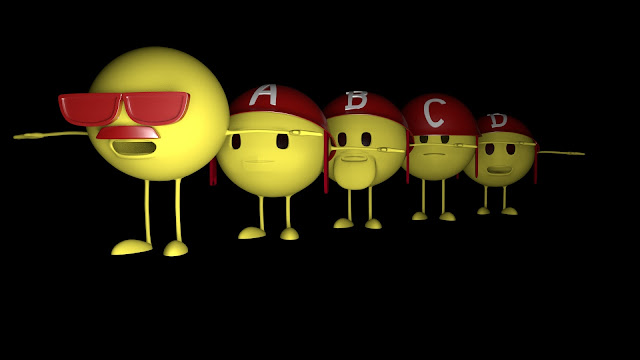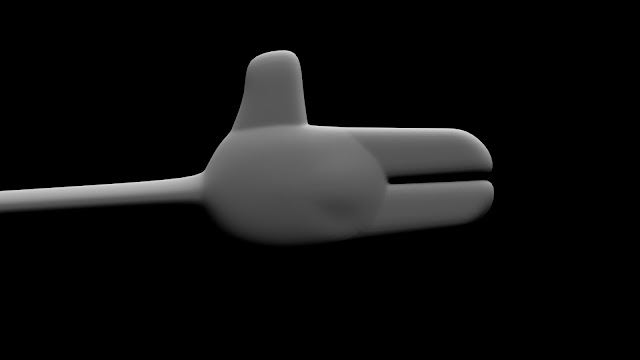Monday, 30 April 2018
Friday, 27 April 2018
Film Review - Picnic at Hanging Rock (1975)
Fig 1 - Picnic at Hanging Rock - Lacing Corsets in dreamscape
Picnic at Hanging Rock (1975) by Peter Weir is categorized as a Drama/Mystery, and takes place in two environments which reflect themselves, this has an impact on the characters which inhabit it making the setting essential to the plot much like the characters of Black Narcissus (1947). 'Picnic' is set between the Landscape of Australia, the harsh crag of Hanging Rock, a peculiar geological formation, and a square cut, Victorian school carved into the earth as if a section of England has been picked and placed there where the lush green turf is cleanly cut creating a divide between Australia and the school, eventually the landscape effects the inhabitants of the school in profound ways.
Peter Weir creates an environment which could arguably be a dreamscape, the very first scene is of a student names Miranda (Anne-Louise Lambert) waking up, signifying it is possible she is waking in a dream, this is accentuated by the rose-tinted camera and slow-motion up until the incident on the rock where arguably the dream is over and reality sets in I will refer to the events up until the girls go missing as the dreamscape. It is suggested "Our unconscious wishes are dramatized, investing us in the story and allowing us an ecstatic release." (Abbott, 2018) which could aid towards the very obvious sexual repression prominent with the female characters throughout and to the exaggeration of human interaction.
Fig 2 - Picnic at Hanging Rock - Irma entering in red dress
We are shown early on that the students aren't of the world by their "Victorian clothing that emphasizes modesty and inconvenience" (Ebert, 1998) through its use of white, and the restricting corsets which emphasis repression of their femininity. White is also in the case symbolizing innocents and naivety of knowledge, as events unfurl the colour of clothing transitions slowly to being black in the very last scenes, the main change occurs for clothing colour when Irma (Helen Robson) appears in the ballet class wearing a red dress when everyone else is in white, it signifies a transition into womanhood, or a journey of knowledge undertaken, as in traversing the mountain and making it back. Miss McCraw (Vivean Gray) can be seen wearing a red dress before the dreamscape ascent up the mountain, which we later learn which removes before ascending herself, possibly a symbol of a return to naivety before the natural environment of the mountain. It is important because it creates mystery, information withheld from the audience.
Fig 3 - Picnic at Hanging Rock - Ritualistic ascent of Hanging Rock
Early in the dreamscape we can obviously see something significant about the character of Miranda, she appears to be the benevolent leader of the girls and the favourite of the teachers, it is made apparent "there is something otherworldly about Miranda herself. It's as if she, too, is the incarnation of some sort of elemental force." (Cavagna, 1999) this could be referring to a modern version of paganism, which was criticized by Christianity as devil worship and witchcraft, is it possible that these superstitions which have carried over through genre film and society directly impact the way we see this film and the theme of paganism, it is depicted in modern paganism of "individuals pursuing a personal spiritual path alone or in a small group" (Pagan Federation International, 2018) which is exactly what we see in the girls in their ritualistic and trance-like journey up the mountain and gradually strip themselves until they are scantily clad, if we are to assume it is a ritual of paganism and with a societal view of this practice being of an evil nature we could assume Peter Weir is playing on this to add a sinister turn on the mystery of what Edith (Christine Schuler) cant recall seeing and flees terrified from the 'ritual' at the summit.
Bibliography:
Abbott, M. (2018). Picnic at Hanging Rock: What We See and What We Seem. [online] The Criterion Collection. Available at: https://www.criterion.com/current/posts/3202-picnic-at-hanging-rock-what-we-see-and-what-we-seem [Accessed 26 Apr. 2018].
Cavagna, C. (1999). AboutFilm.Com - Picnic at Hanging Rock (1975). [online] Aboutfilm.com. Available at: http://www.aboutfilm.com/movies/p/picnichanging.htm [Accessed 27 Apr. 2018].
Ebert, R. (1998). Picnic at Hanging Rock Movie Review (1975) | Roger Ebert. [online] Rogerebert.com. Available at: https://www.rogerebert.com/reviews/great-movie-picnic-at-hanging-rock-1975 [Accessed 27 Apr. 2018].
Pagan Federation International. (2018). What is Paganism? - Pagan Federation International. [online] Available at: http://www.paganfederation.org/what-is-paganism/ [Accessed 27 Apr. 2018].
Illustrations:
Figure 1 - Picnic at Hanging Rock (1975) [Film] - Peter Weir: McElroy & Mcelroy: Australian Film Commission
Figure 2 - Picnic at Hanging Rock (1975) [Film] - Peter Weir: McElroy & Mcelroy: Australian Film Commission
Figure 3 - Picnic at Hanging Rock (1975) [Film] - Peter Weir: McElroy & Mcelroy: Australian Film Commission
Tuesday, 24 April 2018
Monday, 23 April 2018
Friday, 20 April 2018
Tuesday, 17 April 2018
Monday, 16 April 2018
Friday, 13 April 2018
Fantastic Voyage - Pitch adapted briefing room environment Concept Art
Since the Pitch has become apparent that my design for the briefing room could be altered to convey better situational location for my characters. Below is some early concept art to try to nail down the environment in which I could create.
1 2 3
4 5 6
Wednesday, 11 April 2018
Film Review - The Sixth Sense (1999)
Fig 1 - The Sixth Sense - Film Still
The Sixth Sense by N. Night Shyamalan is considered a ghost story from years back, it has been likened more to a psychological thriller than to horror in genre. Bruce Willis as Dr. Malcolm Crowe and Haley Joel Osment as Cole Sear play the main characters, and it is their lives from which the narrative unfurls. It is subtly designed in a way in which to build suspense throughout the film, using its notable sound design and clever visual writing in which to suspend an audience in disbelief. Roger Ebert remarks in his review that "The solution to many of the film's puzzlements is right there in plain view, and the movie hasn't cheated, but the very boldness of the storytelling carried me right past the crucial hints and right through to the end of the film, where everything takes on an intriguing new dimension." (Ebert, 1999), in this we could argue that the way in which Shyamalan puppets the minds of the audience works because it is believed we hold privileged knowledge through out the film creating suspense and giving us the feeling of superior knowledge, when suddenly all we knew was in fact thwarted by sudden information which changes our understanding drastically in the form of a 'plot twist'. It is possible in the form of narrative that The Sixth Sense works so well is because of techniques such as this.
Figure 2 - The Sixth Sense - Silm Still
Shyamalan employs verious other techniques to control the mind of his audience is ways suggested by Desson Howe in a review for the washington post as follows "Perhaps it's the deliberate pacing, the almost contemplative timbre to the whole thing. And the chilliness, the sheer coldness in the air! It uses stillness, implication and silence in ways that reminded me of "Seven." (Howe, 1999), pacing works well in The Sixth Sense because it allows a time of contemplation of what we see, and allows us to process information to a higher degree, Shyamalan plays on the constant force of driving for humankind in which we desire to understand and apply meaning to all things. He sets the atmosphere cold, and takes the time to use longer camera shots motionless in an effort to create a disembodiment to the characters and mise en scen.
Fig 3 - The Sixth Sense - Film Still
The sound design within The Sixth Sense is the icing on the cake to the narrative, sound has always been an aid to setting emotional tone and mood to stimulate a reaction from the audience, Sain Cain suggests "The sporadic yelp of violins create a tangible sense of dread that makes watching it an overwhelmingly freaky experience." (Cain, 2014), it is arguable that the sound design aids the narrative in setting its timing and mood subtly in a way with allows us to become completely engrossed in it. It is noted that "Another important sound effect used in The Sixth Sense is the aural shock" (Baratieri, 2018), whilst we know that sudden shock isn't accompanied by a noise of a violin, in film it adds to the effect, especially during the scene right before Cole is locked in the Attic, the sound of the balloon can be heard bouncing up the stairs and eventually resting on the ceiling, the sound of the balloon popping is timed well with the scream of Cole creating shock to an audiences aural system with two very loud sounds in unison.
Shyamalan demonstrates quality techniques throughout The Sixth Sense which announce his aptitude as an auteur and a professional in the film industry. A clear understanding of timing and pacing of narrative, the mood set with colour and composition of camera shot, and the diegetic and non-diegetic sound accompanying the narrative allows the audience to be completely absorbed in the world which is in front of them.
Bibligraphy:
Baratieri, J. (2018). The Power of Sound in the Film 'The Sixth Sense'. [online] Baratieri.tripod.com. Available at: http://baratieri.tripod.com/id26.html [Accessed 11 Apr. 2018].
Howe, D. (1999). 'The Sixth Sense' (PG-13). [online] Washingtonpost.com. Available at: https://www.washingtonpost.com/wp-srv/style/movies/reviews/sixthsensehowe.htm [Accessed 11 Apr. 2018].
Ebert, R. (1999). The Sixth Sense Movie Review & Film Summary (1999) | Roger Ebert. [online] Rogerebert.com. Available at: https://www.rogerebert.com/reviews/the-sixth-sense-1999 [Accessed 11 Apr. 2018].
Cain, S. (2014). The Sixth Sense: the film that frightened me most. [online] the Guardian. Available at: https://www.theguardian.com/film/filmblog/2014/oct/22/the-sixth-sense-film-frightened-me-most-sian-cain [Accessed 11 Apr. 2018].
Ilustrations:
Figure 1 - The Sixth Sense (1999) [film] - N. Night Shyamalan: Hollywood Picture: Spyglass Entertainment
Figure 2 - The Sixth Sense (1999) [film] - N. Night Shyamalan: Hollywood Picture: Spyglass Entertainment
Figure 3 - The Sixth Sense (1999) [film] - N. Night Shyamalan: Hollywood Picture: Spyglass Entertainment
Monday, 9 April 2018
Subscribe to:
Posts (Atom)
Year 3 - Major Submission - Reflective statement
This is a reflective statement for my 3rd year of 3D computer Animation Arts. I shall outline what it was that I achieved this year, I...
-
Figure 1- Venom (2018) - film poster Venom (2018), directed by Ruben Fleischer is an example of a Heroes Journey film where the hero ...
-
This post provides my initial research notes on descriptive information for the first city presented by Italo Calvino, the city of Armilla....
-
This post contains my research notes and drawings from the third city depicted by Italo Calvino, the city of Diomira. I've noticed a d...



























